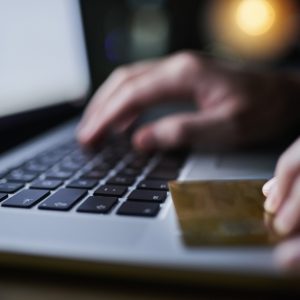Symbol Technologies Inc reckons that its two-dimensional bar code (CI No 1,997), or portable data file – illustrated – will have as big an impact on the information technology industry as the personal computer. Director of international marketing Mark Marriott describes PDF 417 as the world’s lowest cost disposable memory, claiming a single bar code can store up to 50Kb of data – the equivalent of 1,800 ASCII characters or 3,000 numerics. This is approximately 100 times the amount of a conventional single bar code, which can hold between 15 and 20 ASCII characters. To get hold of PDF 417 technology, all the user has to do is buy one of Symbol’s bar code scanners, complete with decoder, for UKP1,700, which he attaches to his computer via a RS232 serial port. The Bohemia, New York-based company will then supply him with encoder software free of charge, which he installs in the firmware of his machine. The software is written in ANSI C and so is portable across a range of hardware environments, particularly Unix. And as Symbol has placed PDF 417 in the public domain, users can incorporate the technology into their own applications. Or buy off-the-shelf kit from such software developers as Standware Inc, which sells label design packages. They then simply key data into their computer, and PDF 417 will automatically encode it. The bar code can be printed out on any industry-standard laser printer as either a stand-alone symbol or an image on a document. However, it’s size is dependent on the type of printer being used, although it can be magnified or compressed somewhat, depending on how densely individual symbols are packed together. The user can specify his requirements from a given list of parameters. In situations, where the symbol could be torn, customers can also determine what level of error correction they want. Reed Solomon error correction algorithms mean that up to two thirds of the bar code could be destroyed and the data still retrieved – the algorithms give each bit of data a relationship to other bits of data, which means the whole can be calculated from its constituent parts. Moreover, should security be an issue, the bar code can be encrypted, using a proprietary or off-the shelf encryption tool. And if the user wishes to send a symbol from computer to computer or fax it to someone, he simply has to slot a facsimile modem board into his box. This, according to Marriott, makes PDF 417 a viable alternative to electronic data interchange systems for those customers not willing to invest in expensive technology. And he sees applications for it across a whole range of industries, particularly the cards area, for example identity cards or medical cards. It could also be used on bills, passports, or to store engineering designs as an alternative to a database. All the user needs do is scan the bar code and the information will be stored in the relevant file on his computer. PDF 417 is currently being piloted at 40 sites worldwide, including two in the UK. It is commercially available now. In the UK, Penguin Books is using Symbol’s bar codes when sending out boxes of books to its retail outlets, so staff don’t have to open the box to know what’s inside. And UK blood banks are using the symbols on their bags of blood to record detailed information gained from about 50 very specific tests.






